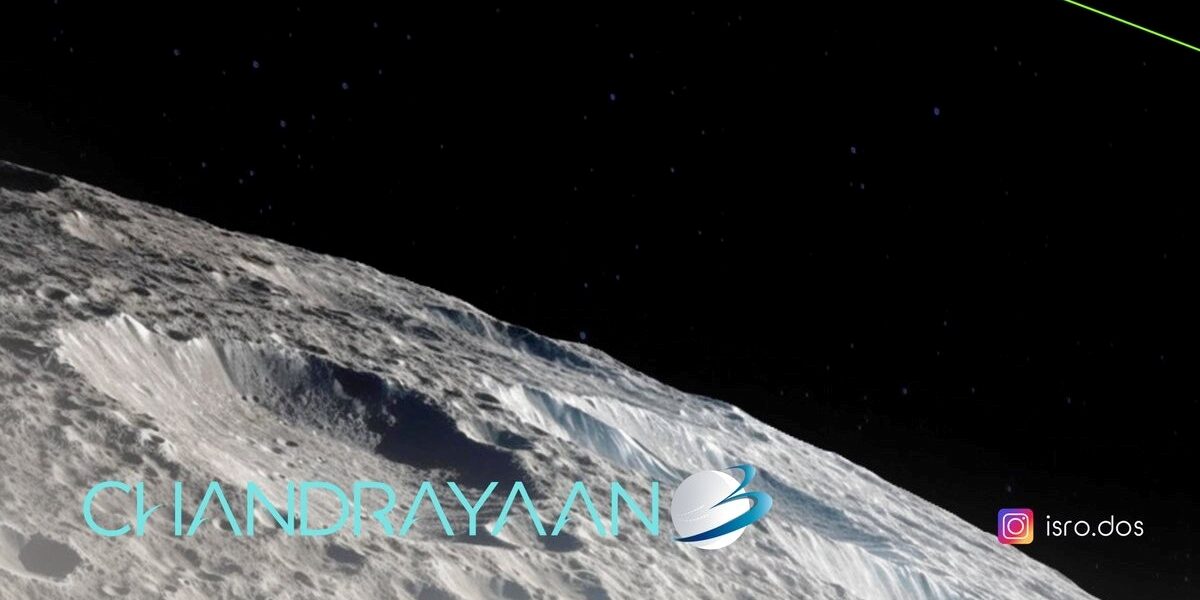The images captured by the Lander Module of the spacecraft, on Friday, 18 August, showed the craters on the Moon's surface.

Images of the moon surface taken by the lander module of Chnadrayaan 3. (Isro/Twitter)
The Indian Space Research Organisation (ISRO) on Friday, 18 August, released a collection of images of the Moon taken by cameras mounted on the Chandrayaan-3 spacecraft’s Lander Module.
ISRO also announced that the health of Chandrayaan-3’s Lander Module is normal and that it has successfully undergone a de-boosting (slowing down) operation, taking it closer to the lunar surface.
The Lander Module of Chandrayaan-3 successfully separated from the Propulsion Module on Thursday, 17 August, 35 days after the satellite was launched on 14 July.
The images, captured after the separation of the Lander Module from the Propulsion Module of the spacecraft, showed the craters on the Moon’s surface that were marked on the photographs released by ISRO as “Fabry”, “Giordano Bruno” and “Harkhebi J”.
The premier space agency shared the images captured by the Lander Position Detection Camera (LPDC) on X on 15 August, and visuals from the Lander Imager (LI) Camera-1 on 17 August.
Chandrayaan-3 Mission:
View from the Lander Imager (LI) Camera-1
on August 17, 2023
just after the separation of the Lander Module from the Propulsion Module #Chandrayaan_3 #Ch3 pic.twitter.com/abPIyEn1Ad— ISRO (@isro) August 18, 2023
Chandrayaan-3 Mission:
🌖 as captured by the
Lander Position Detection Camera (LPDC)
on August 15, 2023#Chandrayaan_3#Ch3 pic.twitter.com/nGgayU1QUS— ISRO (@isro) August 18, 2023
The module comprising the lander (Vikram) and the rover (Pragyan) was on Friday lowered into an orbit closer to the Moon’s surface for the soft landing on the Lunar South Pole on 23 August.
The Lander Module will undergo its second de-boosting operation on 20 August.
“The Lander Module (LM) health is normal. LM successfully underwent a de-boosting operation that reduced its orbit to 113 km x 157 km. The second de-boosting operation is scheduled for August 20, 2023, around 02:00 Hrs. IST,” ISRO tweeted.
Chandrayaan-3 Mission:
The Lander Module (LM) health is normal.LM successfully underwent a deboosting operation that reduced its orbit to 113 km x 157 km.
The second deboosting operation is scheduled for August 20, 2023, around 0200 Hrs. IST #Chandrayaan_3#Ch3 pic.twitter.com/0PVxV8Gw5z
— ISRO (@isro) August 18, 2023
ISRO sources had said that after separation, the lander is expected to undergo “de-boost” operations to place it in an orbit, where the Perilune (the orbit’s closest point to the Moon) is 30 kilometres and Apolune (farthest point from the Moon) is 100 km, for a soft landing.
At around 30 km altitude, the lander enters the powered braking phase, and begins to use its thrusters to reach the lunar surface, they said, adding that at an altitude of about 100 m, the lander would scan the surface to check whether there are any obstacles and then start descending.
ISRO Chairman S Somanath had recently said the most critical part of the landing will be the process of reducing the velocity of the lander from 30 km height to the final landing, and the ability to reorient the spacecraft from horizontal to vertical direction. “This is the trick we have to play here,” he said.
“The velocity at the start of the landing process is almost 1.68 km per second, but (at) this speed (the lander) is horizontal to the surface of the moon. The Chandrayaan-3 here is tilted almost 90 degrees, it has to become vertical,” he explained.
“So, this whole process of turning from horizontal to vertical is a very interesting calculation mathematically. We have done a lot of simulations. It is here where we had the problem last time (Chandrayaan-2),” he said.
Meanwhile, the Propulsion Module, which separated from the Lander Module on Thursday, will remain in its current orbit for months/years.
“The SHAPE (Spectro-polarimetry of Habitable Planet Earth) payload onboard it (Propulsion Module) would perform a spectroscopic study of the Earth’s atmosphere and measure the variations in polarization from the clouds on Earth to accumulate signatures of Exoplanets that would qualify for our habitability,” ISRO said, adding that this payload was developed at its UR Rao Satellite Centre in Bengaluru.
Post its launch on 14 July, India’s third Moon mission Chandrayaan-3 entered the lunar orbit on 5 August, following which orbit reduction manoeuvres were carried out on 6, 9 and 14 August.
As the mission progressed, a series of manoeuvres were conducted to gradually reduce Chandrayaan-3’s orbit and position it over the lunar poles.
Over five moves in the three weeks since 14 July, the ISRO had lifted the Chandrayaan-3 spacecraft into orbits farther and farther away from the Earth.
Then, on 1 August in a key manoeuvre— the slingshot — the spacecraft was sent successfully towards the Moon from Earth’s orbit. Following this trans-lunar injection, Chandrayaan-3 escaped from orbiting the Earth and began following a path that would take it to the vicinity of the Moon.
Chandrayaan-3 is a follow-on mission to Chandrayaan-2 (2019) to demonstrate end-to-end capability in safe landing and roving on the Moon’s surface.
It comprises the indigenously developed Propulsion Module, the Lander Module, and the rover to demonstrate the technologies required for inter-planetary missions.
The mission objectives of Chandrayaan-3 are to demonstrate a safe and soft landing on the lunar surface, to demonstrate rover capabilities on the Moon, and to conduct in-situ scientific experiments.
A successful mission would mean India becomes only the fourth country to accomplish the challenge, after the US, the former Soviet Union, and China.
(With PTI inputs)

Jul 10, 2024

May 27, 2024

May 15, 2024

May 02, 2024

Apr 29, 2024

Apr 29, 2024